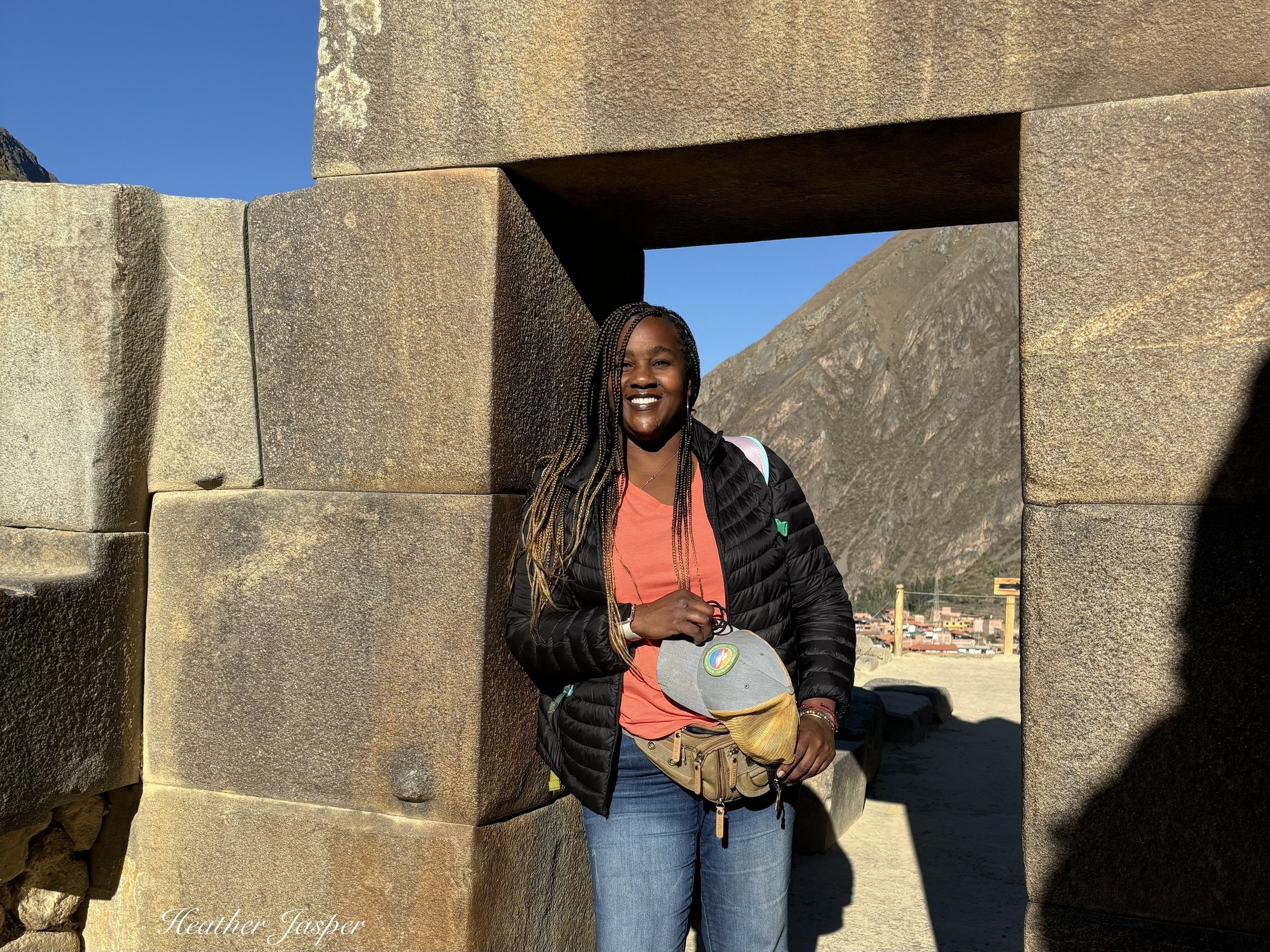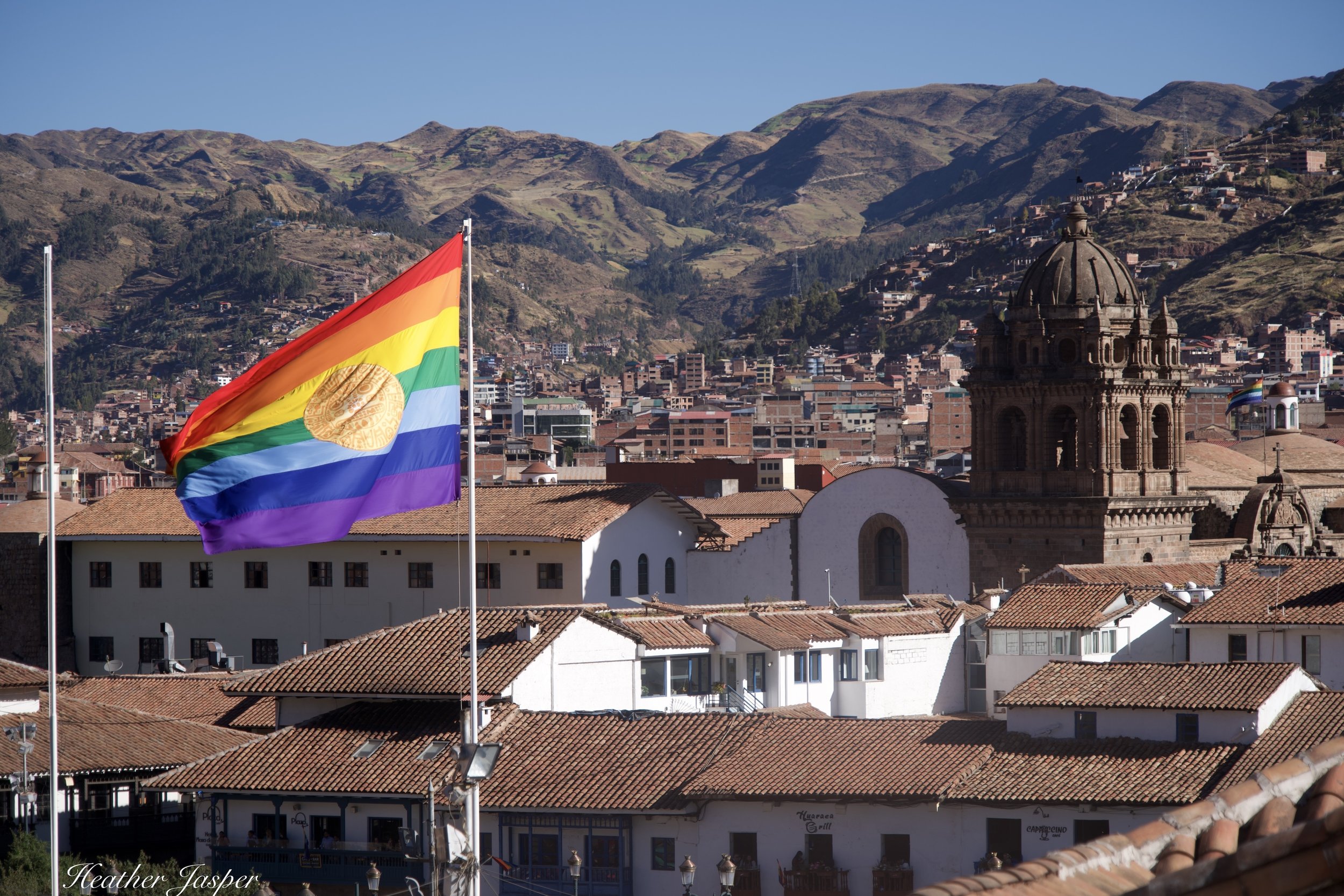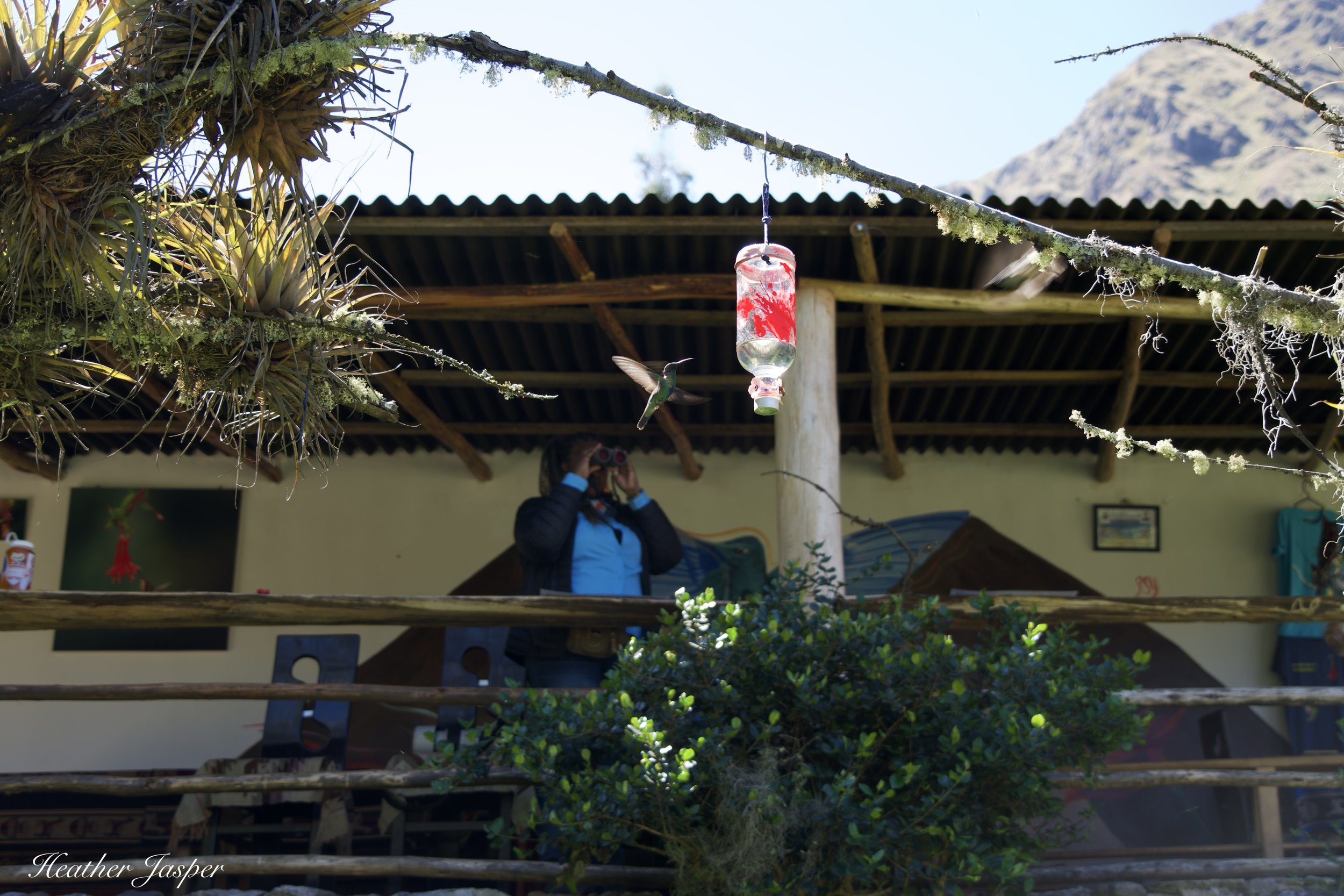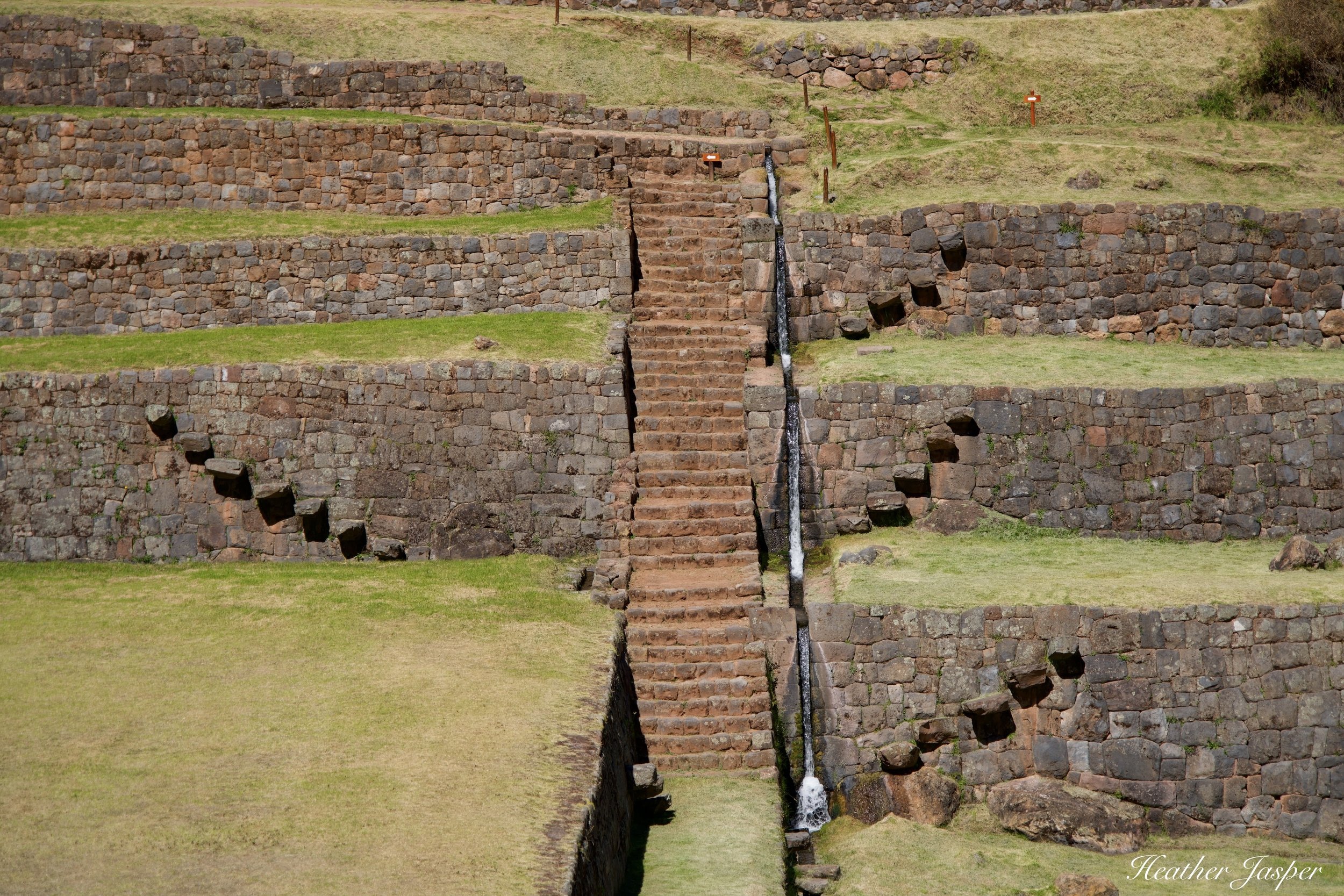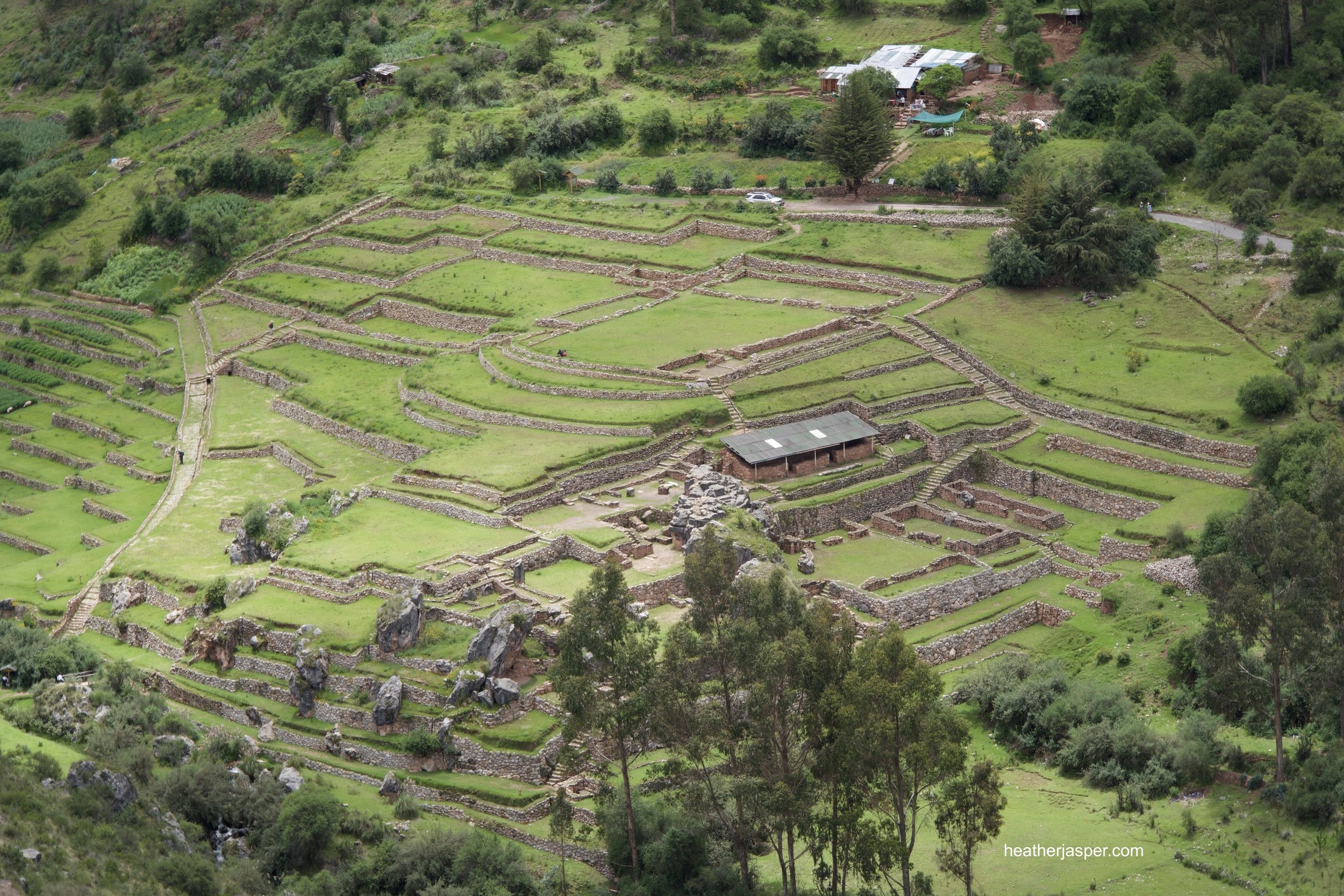Cusco Itinerary
Day said she had an amazing time and got plenty of Inca history & archeology without Machu Picchu.
Here’s your 7 day itinerary for Cusco and the Sacred Valley - without Machu Picchu.
I don’t have anything against Machu Picchu. I’ve been at least a dozen times and love it. However, in June, July and August the lines are long, the crowds are overwhelming, and it can be anticlimactic. The other Inca ruins on this itinerary have significantly fewer visitors and you won’t be standing in long lines or trying to take a photo without a dozen strangers in it.
My friend Day was my first visitor who decided early on that she didn’t need to see Machu Picchu. Tickets were sold out for the day she wanted to go and she wasn’t into paying exorbitant train ticket prices, plus tour agency fees. I completely agreed with her. Read through the itinerary below to see all the other Inca sites she visited - and why she didn’t miss out by skipping Machu Picchu.
This itinerary gives you culture, history, shopping and wildlife in Cusco and the Sacred Valley.
Cusco’s flag has a gold medallion in the center. The rainbow with two blue stripes has long symbolized Inca culture.
Day 1
Take it easy in Cusco.
Most people should take it easy the first day so they can acclimate. Day needed to take it easy because she’d just done a three-week tour around Peru with a group of biologists. She was acclimatized but exhausted from collecting biological samples at 50 sites in only 21 days.
We started the morning with breakfast at Café d’Wasi on Calle Heladeros. This is my favorite coffee shop for locally grown, excellent coffee.
Next we went to the Qorikancha. I think all tourists should first see the Qorikancha before you start going to other museums or archeological sites. It’s the best place in Cusco to see how Spanish architecture is layered on top of Inca foundations. Every church in Cusco is built on what was an Inca temple or palace.
After the Qorikancha, we walked up to the San Blas neighborhood. We started at the picturesque Siete Borreguitos, a stairway full of flowers and murals. Then we went to the Huaca Sapantiana. A huaca is a sacred place and most huaca in Cusco are bedrock with carvings on it. The Huaca Sapantiana is next to a Spanish aqueduct, where a stream comes from the Sacsayhuamán Inca ruins down into Cusco.
We had lunch at my favorite ceviche place: Sakana and then Day hung out at the plaza for the rest of the afternoon.
The Pisac ruins are amazing, but so are the views you get of the Sacred Valley on the hike. Day and I both took a lot of photos of the valley as we walked.
Day 2
The Pisac Inca Ruins
In the morning, we took a van from Calle Puputi in Cusco to Pisac. The van costs s/5 Peruvian soles, which is about $1.30 USD. We dropped our stuff off at our hotel, Pisonay, which is a 2 minute walk from the main plaza in Pisac. It’s very clean and comfortable, with a good breakfast. We paid s/77 for a room with 2 beds, which included breakfast.
We bought snacks at the market, then hiked from the plaza up to the archeological site. The town and archeological site are both named Pisac. Most tourists take a taxi up to the top of the ruins, or visit as part of a Sacred Valley tour, which only gives you about an hour at the ruins. That’s why most people only see the top part of the ruins, which has wide agricultural terraces, a residential area and a cliff full of holes where tombs were looted.
If you walk up from the plaza, you arrive at the ruins the way they were designed to be visited. There is a semi-circle of buildings with two ceremonial doorways that you pass through before you arrive at the part of the ruins with the Intihuatana. An Intihuatana is a sacred piece of bedrock, and the name can be translated as the “place where the sun attaches to the earth.” For the Inca who revered the sun above all else, Intihuatanas are the most important places for rituals and ceremonies.
From the Intihuatana, it’s another half hour to hike up the ridge, go through a short tunnel to get to the part of the ruins that most tourists see. You’re unlikely to see more than a five or six tourists at the Intihuatana, but there will be dozens up at the top area because that’s where busses take people.
We hiked back down the way we came and arrived back in town just before dark.
After Pisac, Ollantaytambo is the biggest and most important Inca archeological site in the Sacred Valley.
Day 3
Travel through the Sacred Valley to Ollantaytambo
In the morning, we took a series of vans called “colectivos” though the Sacred Valley. Pisac is at the end of the Sacred Valley that’s closest to Cusco and the far end of the valley is Ollantaytambo, where you can take the train to Machu Picchu.
Our first colectivo took us to Calca, where we stopped at the market for a fresh fruit smoothie. After looking through the market, we walked to the plaza. Calca has one of my favorite plazas because it has a lot of trees and is good for birdwatching as well as people watching.
Very few tourists stop in Calca but they’re missing out. The market is wonderful and so is the main plaza.
From Calca, we took another colectivo to Urubamba. We debated having lunch in Urubamba, but decided to take one last colectivo to Ollantaytambo to drop our things off at our B&B before lunch. The colectivo from Pisac to Calca cost s/2 soles, from Calca to Urubamba was s/2.50 and from Urubamba was another s/2.50. For about 2 hours travel, it only cost s/7, which is less than $2 USD.
We dropped our things off at El Arriero, a traditional home where we rented a room with two beds for s/110 per night. It was more expensive than Pisac, especially considering that breakfast wasn’t included. However, it was lovely and right in the historic center. Ollantaytambo is a very small town and space is at a premium, especially in the historic part of town. Call Juan at +51 988 463 582 to reserve a room.
We had lunch at Chuncho, which is my favorite restaurant in Ollantaytambo. Chuncho serves only food grown at their organic farms in the Sacred Valley. Day said it was the best meal she’d ever had. She raved about the flavors in her chicken stew, which she said was so flavorful it didn’t even need the chicken. I had locro, which is a kind of pumpkin stew with fresh fava beans.
After lunch we visited the main archeological site in town, also called Ollantaytambo. It’s a massive temple, which wasn’t finished being built when the Spanish arrived and interrupted everything. We spent over two hours at the Ollantaytambo Inca ruins. Read my blog about the ruins here.
There were a few other people at the Ensifera Ensifera hummingbird gardens but for part of the morning we had the place to ourselves.
Day 4
Birdwatching and another Inca ruin
In the morning, we went to the Ensifera Ensifera hummingbird gardens. We paid s/35 for a taxi from Ollantaytambo to the gardens, which are in the hills above the village of Yanahuara. It takes about 30 minutes to get there. Read my blog about the hummingbird gardens here.
We spent about five hours watching birds, then walked down to the main road that goes through the Sacred Valley and caught a colectivo back to Ollantaytambo, which cost s/2.50. We had a delicious lunch at Apu Veronica then hiked up to the Pinkuylluna archeological site. Read my blog about Pinkuylluna here.
If you’re in Cusco on a Saturday, don’t miss the artisans’ market in the Plazoleta San Blas.
Day 5
Shopping in Cusco
In the morning, we took a van from Ollantaytambo to Cusco. This day was scheduled for rest, shopping and visiting the Regional Historical Museum. It costs s/10 to take a colectivo from Ollantaytambo to Cusco.
Cusco has many great places for shopping and souvenirs. There is a great artisans’ market in the Plazolate San Blas on Saturdays. San Blas in general has lots of great shopping. It was where the Inca brought the best artisans from throughout South America. Today, you’ll still find the best painters, ceramicists, metalworkers, weavers and other artists in San Blas. Two of my favorite shops, HJK and Xapiri, are also in the Plazoleta San Blas.
Day 6
Cusco’s Inca Sites
For the last day in Cusco, you should do what’s called the “city tour,” which isn’t a tour of the city. Instead, it’s a tour of the main archeological sites in the hills above Cusco. The tour takes you to Sacsayhuamán, Q’enqo, Puka Pukará and Tambomachay. Read my blog about Sacsayhuamán here. (It’s pronounced sack-sigh-wah-mon). Read about the other three in this article I wrote for Matador Network.
Day 7
Birdwatching and one last Inca site
We took a bus to Lucre and got off at the Huacarpay marshes with our binoculars and bird books. Read my blog about birding at Huacarpay here. On the way back, we stopped at Tipón, a water temple with nearby residential and agricultural areas. The way the terraces are built, you can hear water flowing reflected off the stone walls at every spot in the temple area. The photos below are of only part of the temple terraces and a few of the many fountains.
The Boleto Turístico includes ten Inca archeological sites, two monuments and four museums.
Why doesn’t this itinerary include Machu Picchu?
At the Inca archeological sites on this itinerary, you can learn just as much about the Inca civilization and culture, without the crowds and long lines at Machu Picchu. Every site on this itinerary is just as beautiful and just as historic, without the crowds.
After you have seen the Qorikancha, Pisac, Ollantaytambo, Sacsayhuamán, Q’enqo, Puka Pukara, Tambomachay and Tipón, you don’t need to also see Machu Picchu.
Also, Machu Picchu is much more expensive than these other sites. The sites listed above are part of the “boleto turistico” which costs s/130 (about $35 USD). The entrance ticket to Machu Picchu is about twice that. (The new 2024 website for Machu Picchu tickets is here). However, you must also factor in the train tickets from Ollantaytambo to Aguas Calientes, which can be around $200 USD round trip, plus the bus from Aguas Calientes up to the ruins: $24 round trip. All told, you’re looking at a minimum of $300, and that’s if you do it without an agency or guide and without staying the night in Aguas Calientes. Most people spend at least $500 to go to Machu Picchu, when you include guides, hotels and food.
If you really want to go to Machu Picchu, read this blog. Otherwise, stick to the itinerary above.
If Day had more time I would have taken her to Inkilltambo. Read my Inkilltambo blog here.

